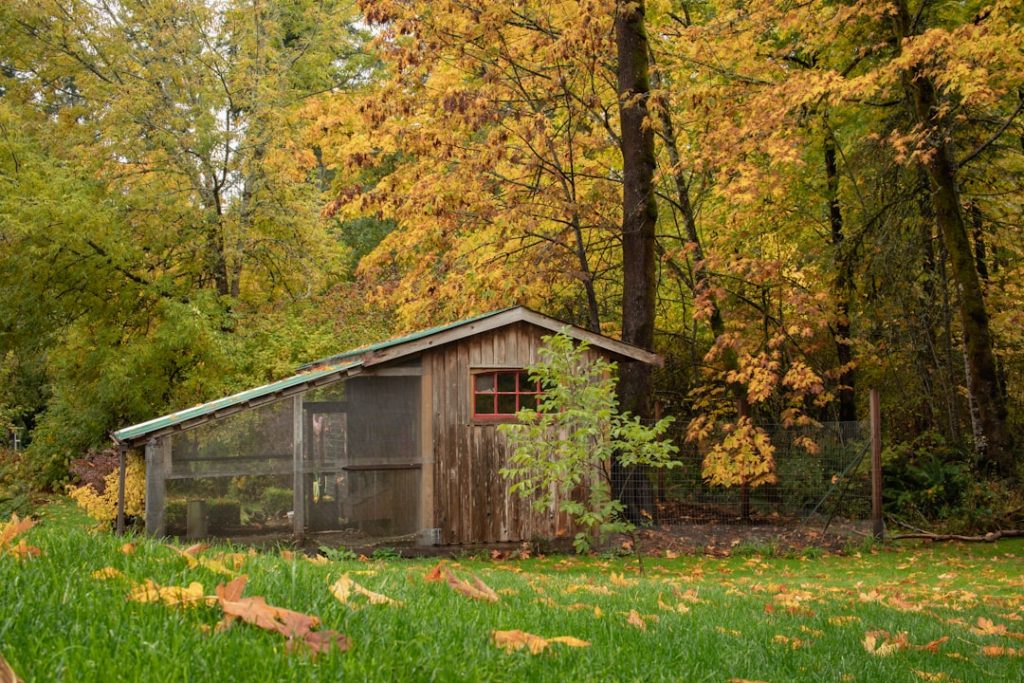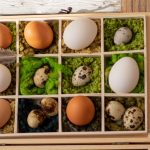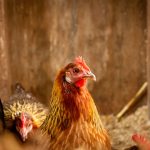Keeping chickens indoors is an important aspect of poultry management that serves multiple purposes. This practice is particularly crucial during certain times of the year or in specific situations. The primary reasons for housing chickens inside include protection from extreme weather conditions, predators, and diseases.
Extreme weather, such as heavy rain, snow, or intense heat, can negatively impact chicken health. Indoor housing prevents chickens from getting wet and cold or suffering from heat stress. It also shields them from predators like foxes, raccoons, and birds of prey, which pose significant threats to free-ranging chickens.
Disease prevention is another key benefit of indoor housing. By limiting exposure to wild birds and other potential carriers of pathogens, the risk of disease transmission is reduced. This controlled environment allows poultry owners to better manage their flock’s diet and ensure they receive necessary nutrients for optimal health.
Indoor housing provides poultry owners with greater control over the chickens’ environment, enabling them to maintain consistent conditions for their flock’s safety and well-being. Understanding the importance of indoor housing helps poultry owners make informed decisions about when and for how long to keep their chickens inside, ultimately contributing to better overall flock management and health.
Table of Contents
- 1 Factors to Consider When Deciding How Long to Keep Chickens Inside
- 2 Recommended Timeframe for Keeping Chickens Inside
- 3 Benefits of Keeping Chickens Inside for a Specific Period
- 4 Potential Risks of Keeping Chickens Inside for Too Long
- 5 Tips for Creating a Healthy and Stimulating Indoor Environment for Chickens
- 6 Transitioning Chickens from Inside to Outside
- 7 FAQs
- 7.1 What is the recommended time to keep chickens inside?
- 7.2 Why do you need to keep chickens inside for a certain period of time?
- 7.3 What factors should be considered when determining how long to keep chickens inside?
- 7.4 What are the benefits of keeping chickens inside for a specific period of time?
- 7.5 How can I ensure that my chickens are ready to be let outside after the recommended period of time?
Key Takeaways
- Keeping chickens inside is important for their safety and protection from predators
- Factors to consider when deciding how long to keep chickens inside include weather, space, and health concerns
- The recommended timeframe for keeping chickens inside is typically 6-8 weeks
- Benefits of keeping chickens inside for a specific period include protection from extreme weather and better monitoring of their health
- Potential risks of keeping chickens inside for too long include stress, boredom, and reduced egg production
Factors to Consider When Deciding How Long to Keep Chickens Inside
Weather Conditions: A Crucial Factor
Weather conditions play a significant role in determining how long chickens should be kept indoors, as extreme temperatures or inclement weather can pose a risk to their health. Extreme temperatures, heavy rain, snow, or strong winds can pose a risk to the health and well-being of chickens if they are kept outside for too long. In such cases, it may be necessary to keep them indoors until the weather improves and it is safe for them to go outside again.
Indoor Space: Size and Layout Matter
The size and layout of the indoor space are also important considerations, as they will determine the amount of space available for the chickens to move around and engage in natural behaviors. A larger indoor space with perches, nesting boxes, and enrichment activities will provide a more stimulating environment for the chickens.
Managing the Indoor Environment
Additionally, the number of chickens being kept indoors will impact the management and cleanliness of the indoor environment. More chickens will require more frequent cleaning and maintenance to ensure a healthy and hygienic living space.
Recommended Timeframe for Keeping Chickens Inside
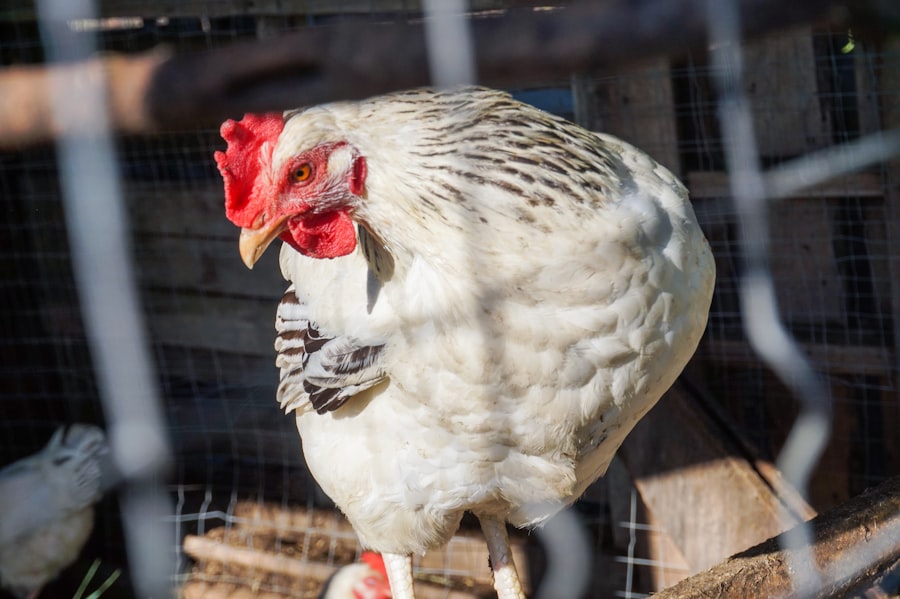
The recommended timeframe for keeping chickens inside will vary depending on the specific circumstances and factors mentioned earlier. However, as a general guideline, it is advisable to keep chickens inside for a period that allows for their safety and well-being without compromising their physical and mental health. This may range from a few days to several weeks, depending on the weather conditions, predator activity, or disease outbreaks in the area.
It is essential to monitor the situation closely and make informed decisions based on the specific needs of the flock. In some cases, it may be necessary to keep chickens inside for a few days to a week to protect them from extreme weather conditions or predator activity. During this time, it is crucial to provide a stimulating indoor environment with ample space for movement and natural behaviors.
Additionally, regular cleaning and maintenance of the indoor space are essential to ensure a healthy living environment for the chickens. In other situations, such as disease outbreaks in the area or biosecurity measures, it may be necessary to keep chickens inside for an extended period, ranging from several weeks to a few months. During this time, it is important to provide proper nutrition and enrichment activities to prevent boredom and stress in the flock.
Ultimately, the recommended timeframe for keeping chickens inside should prioritize their safety and well-being while considering their physical and mental health needs.
Benefits of Keeping Chickens Inside for a Specific Period
Keeping chickens inside for a specific period can offer several benefits for their safety, health, and overall well-being. By providing a controlled indoor environment, poultry owners can protect their flock from extreme weather conditions, predators, and diseases. Additionally, keeping chickens inside can allow for better management of their diet and nutrition, as well as provide opportunities for enrichment activities to stimulate their physical and mental health.
Overall, the benefits of keeping chickens inside for a specific period can contribute to a healthier and happier flock. One of the primary benefits of keeping chickens inside for a specific period is protecting them from extreme weather conditions. Harsh weather, such as heavy rain, snow, or extreme heat, can pose a risk to the health of chickens if they are kept outside for too long.
By bringing them indoors during these times, poultry owners can ensure their safety and well-being while waiting for the weather to improve. Additionally, keeping chickens inside can also protect them from predators that may pose a threat to free-ranging chickens. This can help reduce stress and anxiety in the flock while providing a secure environment for them to thrive.
Furthermore, keeping chickens inside can also prevent the spread of diseases by limiting their exposure to wild birds and other potential carriers of pathogens. By providing a controlled indoor environment, poultry owners can minimize the risk of disease outbreaks and maintain better overall health in their flock.
Potential Risks of Keeping Chickens Inside for Too Long
While there are many benefits to keeping chickens inside for a specific period, there are also potential risks that poultry owners should be aware of to ensure the well-being of their flock. Keeping chickens inside for too long can lead to boredom, stress, and behavioral issues in the flock. Additionally, inadequate space and poor ventilation in the indoor environment can pose health risks such as respiratory problems and reduced immune function in chickens.
It is essential to monitor the indoor environment closely and provide proper care and enrichment activities to mitigate these potential risks. One potential risk of keeping chickens inside for too long is boredom and stress in the flock. Chickens are naturally active animals that require space to move around and engage in natural behaviors such as scratching, dust bathing, and perching.
If they are confined indoors without adequate space or enrichment activities, they may become bored and stressed, leading to behavioral issues such as feather pecking or aggression. Additionally, inadequate space and poor ventilation in the indoor environment can pose health risks for chickens. Overcrowding can lead to respiratory problems due to poor air quality and increased ammonia levels from accumulated droppings.
This can compromise their immune function and make them more susceptible to diseases. It is crucial to monitor the indoor environment closely and provide proper care and enrichment activities to mitigate these potential risks.
Tips for Creating a Healthy and Stimulating Indoor Environment for Chickens
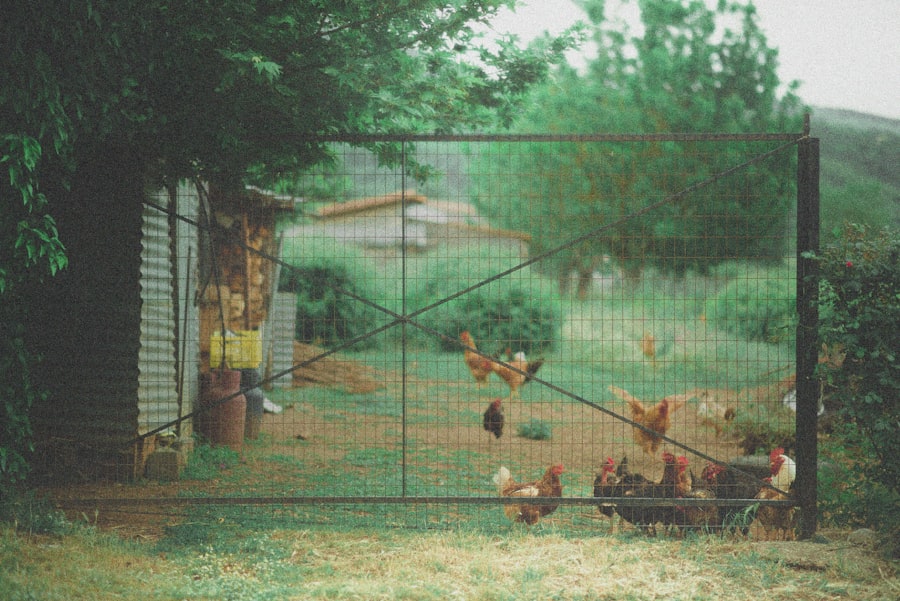
Creating a healthy and stimulating indoor environment for chickens is essential to ensure their well-being during confinement. There are several tips that poultry owners can follow to provide a comfortable and enriching living space for their flock. These include providing adequate space for movement and natural behaviors, ensuring proper ventilation and cleanliness, offering a balanced diet with access to fresh water at all times, and providing enrichment activities such as perches, nesting boxes, and toys.
By following these tips, poultry owners can create a healthy and stimulating indoor environment that promotes the physical and mental health of their flock. One tip for creating a healthy and stimulating indoor environment for chickens is providing adequate space for movement and natural behaviors. Chickens require space to move around freely, stretch their wings, scratch at the ground, dust bathe, perch, and lay eggs comfortably.
It is essential to provide enough space for each chicken to prevent overcrowding and allow them to engage in these natural behaviors without feeling confined or stressed. Additionally, ensuring proper ventilation and cleanliness in the indoor space is crucial for maintaining good air quality and preventing respiratory problems in the flock. Regular cleaning of droppings and bedding will help reduce ammonia levels and maintain a hygienic living environment for the chickens.
Another tip is offering a balanced diet with access to fresh water at all times. Providing high-quality feed that meets the nutritional needs of chickens is essential for their overall health and well-being. Additionally, access to fresh water is crucial for hydration and proper digestion in chickens.
It is important to monitor their food and water intake regularly to ensure they are receiving adequate nutrition and hydration while being kept indoors. Furthermore, providing enrichment activities such as perches, nesting boxes, and toys can help stimulate the physical and mental health of chickens during confinement. These activities provide opportunities for exercise, exploration, and mental stimulation that can help prevent boredom and stress in the flock.
By offering a variety of enrichment activities, poultry owners can create a stimulating indoor environment that promotes the overall well-being of their chickens.
Transitioning Chickens from Inside to Outside
Transitioning chickens from inside to outside requires careful planning and consideration to ensure a smooth adjustment for the flock. There are several steps that poultry owners can take to facilitate this transition effectively while minimizing stress and potential health risks for the chickens. These steps include gradually introducing outdoor access, monitoring their behavior and physical condition during outdoor time, providing protection from predators during free-ranging activities, and maintaining a clean living environment both indoors and outdoors.
By following these steps, poultry owners can help their flock adjust comfortably to outdoor living while ensuring their safety and well-being. One step in transitioning chickens from inside to outside is gradually introducing outdoor access to allow them time to acclimate to the new environment. This can be done by providing supervised outdoor time in a secure area where they can explore and engage in natural behaviors while being protected from predators.
Monitoring their behavior and physical condition during outdoor time is essential to ensure they are adjusting comfortably without experiencing stress or health issues. Additionally, providing protection from predators during free-ranging activities is crucial for ensuring the safety of the flock when they are outside. This may involve using fencing or netting to create a secure outdoor space or supervising their free-ranging activities to prevent potential encounters with predators.
Maintaining a clean living environment both indoors and outdoors is also important during the transition period. Regular cleaning of indoor spaces will help prevent disease outbreaks while ensuring a healthy living environment for the flock when they are brought back indoors. Overall, transitioning chickens from inside to outside requires careful planning and consideration to ensure a smooth adjustment for the flock while minimizing stress and potential health risks.
By following these steps effectively while ensuring their safety and well-being.
If you’re wondering how long you need to keep chickens inside, you may also be interested in learning about where to put your chicken coop. This article on Poultry Wizard provides valuable information on the best location for your chicken coop to ensure the health and safety of your flock. Check it out here.
FAQs
What is the recommended time to keep chickens inside?
The recommended time to keep chickens inside is typically around 6-8 weeks, depending on the breed and the weather conditions.
Why do you need to keep chickens inside for a certain period of time?
Keeping chickens inside for a certain period of time allows them to acclimate to their new environment, build up their immune systems, and grow feathers for better insulation before being allowed outside.
What factors should be considered when determining how long to keep chickens inside?
Factors to consider when determining how long to keep chickens inside include the breed of the chickens, the weather conditions, and the availability of outdoor space for the chickens to roam.
What are the benefits of keeping chickens inside for a specific period of time?
Keeping chickens inside for a specific period of time helps to protect them from predators, allows them to establish a routine, and reduces the risk of them wandering off or getting lost.
How can I ensure that my chickens are ready to be let outside after the recommended period of time?
You can ensure that your chickens are ready to be let outside by observing their behavior, checking their feather growth, and gradually introducing them to the outdoor environment to prevent stress or shock.
Meet Walter, the feathered-friend fanatic of Florida! Nestled in the sunshine state, Walter struts through life with his feathered companions, clucking his way to happiness. With a coop that’s fancier than a five-star hotel, he’s the Don Juan of the chicken world. When he’s not teaching his hens to do the cha-cha, you’ll find him in a heated debate with his prized rooster, Sir Clucks-a-Lot. Walter’s poultry passion is no yolk; he’s the sunny-side-up guy you never knew you needed in your flock of friends!

